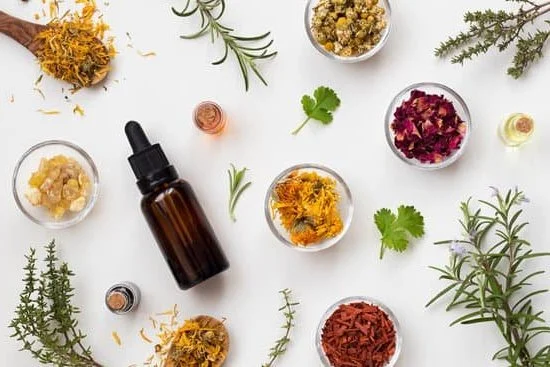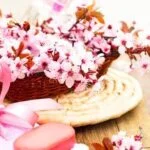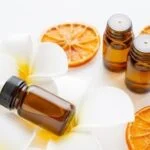Are you looking to create a serene and calming atmosphere in your home? Learn how to make aromatherapy room sprays and harness the power of essential oils to enhance relaxation and well-being. Aromatherapy has been used for centuries as a natural way to promote mental, emotional, and physical health, with room sprays being a convenient and effective method of enjoying its benefits.
Aromatherapy utilizes the natural healing properties of essential oils to support overall wellness. By incorporating these aromatic compounds into your environment, you can create a soothing ambiance that promotes relaxation, reduces stress, and uplifts your mood. Room sprays are an accessible way to incorporate aromatherapy into daily life, whether at home or in the office, providing a quick and simple method for experiencing the therapeutic effects of essential oils.
In this article, we will explore the art of creating homemade aromatherapy room sprays using essential oils and other natural ingredients. Understanding the benefits of aromatherapy and the role of room sprays in promoting relaxation is crucial in making informed choices when it comes to crafting personalized scents for your living spaces.
Additionally, we will delve into different essential oil blends that cater to specific needs such as stress relief, meditation, and overall well-being. Whether you are new to aromatherapy or looking for ways to elevate your experience with essential oils, this guide will equip you with the knowledge and skills needed to make luxurious room sprays tailored to your preferences.
Essential Oils 101
When it comes to creating your own aromatherapy room sprays, the type of essential oils you choose will play a significant role in the overall scent and therapeutic benefits of the spray. Here are some of the most commonly used essential oils in aromatherapy room sprays, along with their unique properties and benefits:
1. Lavender Essential Oil: Known for its calming and relaxing properties, lavender essential oil is a popular choice for promoting relaxation and reducing stress and anxiety.
2. Peppermint Essential Oil: With its invigorating and refreshing aroma, peppermint essential oil can help improve focus and mental clarity, making it an excellent choice for creating energizing room sprays.
3. Eucalyptus Essential Oil: With its fresh and uplifting scent, eucalyptus essential oil is often used to clear the mind and promote a sense of vitality, making it ideal for room sprays designed to enhance mental alertness.
4. Lemon Essential Oil: Bursting with citrusy goodness, lemon essential oil is known for its mood-boosting properties and can help create a cheerful and uplifting atmosphere in any space.
Now that you have an understanding of some common essential oils used in aromatherapy room sprays, let’s explore how to make your own personalized blends using these oils to suit your specific needs.
To make aromatherapy room sprays containing these essential oils (lavender, peppermint, eucalyptus, lemon), follow these simple steps:
– Gather your materials including distilled water or witch hazel as a base, the desired essential oils, and a small spray bottle.
– Fill the spray bottle with your chosen base ingredient leaving some space at the top.
– Add 10-20 drops of each essential oil to the bottle depending on your preferred strength.
– Securely cap the bottle and shake well to mix the oils with the base.
– Your personalized aromatherapy room spray is now ready to use.
Experiment with different combinations of these essential oils to create your own unique scents for different purposes such as relaxation, meditation or stress relief. Remember to always handle essential oils safely according to recommended guidelines.
DIY Aromatherapy Room Spray Recipes
Aromatherapy room sprays are a wonderful way to reap the benefits of essential oils and create a relaxing atmosphere in your home or workspace. With just a few simple ingredients, you can create personalized room sprays that cater to your specific needs and preferences. In this section, we will provide you with a step-by-step guide on how to make aromatherapy room sprays at home.
Gather Your Ingredients
The first step in creating your own aromatherapy room spray is to gather all the necessary ingredients. You will need a small spray bottle, distilled water, witch hazel or vodka, and of course, your choice of essential oils. When choosing essential oils, consider their individual properties and how they can contribute to the overall scent and therapeutic benefits of your room spray.
Creating the Perfect Blend
Once you have all your ingredients assembled, it’s time to create the perfect blend for your room spray. Start by deciding on the purpose of your room spray – whether it’s for relaxation, stress relief, or energizing purposes. Then, choose a combination of essential oils that align with your desired outcome. For example, lavender and chamomile essential oils are great for promoting relaxation, while peppermint and eucalyptus are invigorating choices.
Mixing and Storing Your Room Spray
After selecting your desired essential oil blend, it’s time to mix up your room spray. Simply combine a small amount of witch hazel or vodka with distilled water in the spray bottle, leaving enough space at the top for the essential oils.
Add around 30-40 drops of your chosen essential oil blend into the bottle and shake well to ensure everything is mixed thoroughly. Once mixed, store your room spray in a cool, dark place for maximum shelf life.
By following these simple steps on how to make aromatherapy room sprays at home, you can enjoy the therapeutic benefits of essential oils while creating a personalized scent that suits your needs and preferences.
Choosing the Right Base
When it comes to making aromatherapy room sprays, choosing the right base is crucial in creating the perfect blend. The base ingredients, such as distilled water, witch hazel, and alcohol, play a significant role in the overall effectiveness and longevity of your room spray. Here’s a closer look at these base options and how they contribute to the quality of your DIY aromatherapy room spray:
1. Distilled Water:
Distilled water is often used as a base ingredient for room sprays due to its purity and lack of impurities that may affect the essential oils. When using distilled water as a base for your aromatherapy room spray, make sure to use it at room temperature to prevent any interference with the scent of the essential oils.
2. Witch Hazel:
Witch hazel is a natural astringent that is commonly used as a base for aromatherapy room sprays. It not only helps to disperse essential oils evenly throughout the liquid but also provides a subtle fragrance of its own. When using witch hazel, opt for an alcohol-free version to avoid any overwhelming scent.
3. Alcohol:
Alcohol, such as vodka or rubbing alcohol, can also be used as a base ingredient for room sprays. It acts as a preservative that helps prolong the shelf life of your DIY creation. However, it’s important to use alcohol in moderation as an excessive amount can dry out the air and potentially irritate sensitive individuals.
Understanding the role of these different base ingredients will help you make an informed decision when creating your own aromatherapy room spray recipe tailored to your preferences and needs. By selecting the right base for your blend, you can ensure that your homemade room spray remains effective and safe for use.
Safety Tips
In learning how to make aromatherapy room sprays, it is crucial to prioritize safety when working with essential oils. Essential oils are potent and concentrated substances that can cause skin irritation, allergic reactions, or even adverse effects if not handled properly. When handling essential oils, always use caution and follow these important safety tips:
Firstly, be sure to carefully read the labels of essential oils before using them. Some essential oils may not be safe for use during pregnancy, while others may cause photosensitivity or skin irritation if used undiluted. Always do a patch test by diluting the essential oil in a carrier oil before applying it to your skin.
Secondly, keep essential oils out of reach of children and pets. Many essential oils are toxic when ingested, so store them in a safe place where they cannot be accessed by curious hands or paws.
Lastly, it’s important to consider potential allergens when creating aromatherapy room sprays. Some individuals may have sensitivities or allergies to specific essential oils such as lavender or peppermint. Be mindful of any known allergies when choosing which essential oils to use in your room spray recipes.
In addition to these safety tips, always ensure proper ventilation when using room sprays in enclosed spaces. This will help prevent any potential respiratory irritation for individuals who may be sensitive to strong scents. By following these safety guidelines, you can enjoy the benefits of aromatherapy room sprays while minimizing any risks associated with using essential oils.
| Safety Tips | How to Ensure Safety |
|---|---|
| Read labels and do patch tests | Always dilute and test on a small area of skin |
| Keep out of reach of children and pets | Store in a secure location |
| Consider potential allergens | Avoid using known allergens and test for sensitivities |
Benefits of Aromatherapy Room Sprays
Aromatherapy room sprays are a simple and effective way to promote relaxation, enhance mood, and improve overall well-being. By harnessing the natural healing properties of essential oils, these sprays can have a powerful impact on our mental and emotional health. In this section, we will explore the various benefits of incorporating aromatherapy room sprays into your daily routine.
Enhancing Mood
One of the most noticeable effects of aromatherapy room sprays is their ability to uplift and enhance our mood. Certain essential oils, such as lavender and citrus oils, are known for their mood-boosting properties. They can help create a sense of calm and happiness, making them perfect for use in living areas or workspaces where stress or tension may be present.
Promoting Relaxation
Aromatherapy room sprays can also be used to create a relaxing atmosphere at home or in any space where you want to unwind. Essential oils like chamomile, bergamot, and vanilla have calming properties that can help reduce anxiety and promote a sense of peace and tranquility. Spritzing your bedroom with a lavender-infused room spray before bedtime can also help prepare your mind and body for restful sleep.
Improving Overall Well-Being
In addition to enhancing mood and promoting relaxation, using aromatherapy room sprays can contribute to an overall improvement in well-being. Whether it’s reducing stress levels, boosting energy, or supporting mental clarity, certain essential oils have the power to positively impact various aspects of our health. By customizing your own room spray blends with specific wellness goals in mind, you can tailor their effects to meet your individual needs.
By understanding how different essential oils affect our emotions and physical well-being, we can harness their power to create personalized aromatherapy room sprays that cater to our unique needs. Experimenting with various essential oil combinations can lead us to discover the perfect scent that promotes relaxation, enhances mood, and supports our overall well-being.
With proper knowledge of essential oil safety and precautions outlined in DIY Aromatherapy Room Spray Recipes section,in this article,you’ll be able understanding how-to make aromatherapy room sprays as mentioned throughout this pargraph.
Personalizing Your Scent
Aromatherapy room sprays are a wonderful way to customize the atmosphere of your home or workspace, and experimenting with different essential oil combinations allows you to create a unique scent that suits your preferences. When it comes to personalizing your scent, there are a few key tips to keep in mind to ensure that you achieve the desired fragrance and therapeutic benefits.
First and foremost, it’s important to understand the properties of various essential oils and how they interact with one another. For example, lavender is known for its calming and stress-relieving properties, while citrus oils like lemon and orange are invigorating and uplifting. By familiarizing yourself with the benefits of different essential oils, you can choose combinations that align with your specific needs, whether it be relaxation, energy-boosting, or grounding.
Experimentation is key when it comes to creating a personalized room spray. Start by combining small amounts of different essential oils in a glass spray bottle filled with distilled water or another suitable base. This will allow you to test out different scent combinations without committing to a large batch. Keep track of the ratios and combinations you try so that you can replicate any winning blends in the future.
Remember to take into account the intensity of each essential oil when experimenting with different combinations. Some oils have strong scents that can easily overpower others if used in large quantities. It’s helpful to start with just a few drops of each oil and gradually adjust the ratios as needed until you achieve the desired balance.
| Essential Oils | Properties | Ideal Combinations |
|---|---|---|
| Lavender | Calming, Stress-Relief | Lavender + Chamomile |
| Patchouli | Grounding, Balancing | Patchouli + Sandalwood + Cedarwood |
| Lemon | Uplifting, Energizing | Lemon + Peppermint + Eucalyptus |
By following these tips and guidelines on creating personalized scents using essential oils, you can craft unique aromatherapy room sprays that cater specifically to your preferences and needs.
Making Aromatherapy Room Sprays for Different Purposes
In conclusion, learning how to make aromatherapy room sprays is a rewarding and enjoyable experience that allows individuals to create personalized scents tailored to their specific needs. By understanding the benefits of aromatherapy and the role of room sprays in promoting relaxation and well-being, one can appreciate the value of these DIY creations.
Exploring the different types of essential oils commonly used in aromatherapy room sprays and their unique properties provides a foundation for creating effective blends that cater to various purposes, such as relaxation, meditation, and stress relief.
Additionally, the step-by-step guide on creating personalized room sprays using essential oils and other natural ingredients empowers individuals to experiment with different scent combinations. Understanding the different base ingredients like distilled water, witch hazel, and alcohol assists in creating the perfect room spray.
Moreover, important safety tips ensure that essential oils are handled and used safely while being mindful of potential allergens and precautions. This knowledge allows for a safe and enjoyable DIY process that results in high-quality aromatherapy room sprays.
Ultimately, with a better understanding of the benefits of aromatherapy room sprays and the ability to personalize scents through experimenting with various essential oil combinations, individuals can create an aromatic environment that enhances mood, promotes relaxation, and improves overall well-being. This article provides valuable information on not only making aromatherapy room sprays but also tailoring them to specific needs.
Whether it’s creating a spray for relaxation after a long day or one geared towards stress relief during challenging times, learning how to make aromatherapy room sprays opens up endless possibilities for enhancing one’s living space with soothing scents.
Frequently Asked Questions
What Essential Oils Make a Good Room Spray?
Essential oils such as lavender, peppermint, eucalyptus, and citrus oils make a good room spray due to their pleasant scents and natural antibacterial properties. These oils can freshen the air and provide aromatherapy benefits.
How Do You Make Essential Oil Spray Without Alcohol?
To make an essential oil spray without alcohol, you can use distilled water or witch hazel as a base instead. Simply mix the preferred essential oils with the water or witch hazel in a spray bottle and shake well before each use.
How Do You Make a Non Toxic Room Spray?
Making a non-toxic room spray involves using natural ingredients such as essential oils, distilled water, and natural emulsifiers like witch hazel or vegetable glycerin. This ensures that the room spray is free from harmful chemicals and safe for use around children and pets.

Are you looking for a natural way to improve your health and wellbeing?
If so, aromatherapy may be the answer for you.





